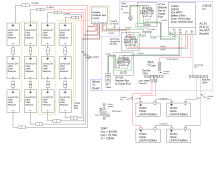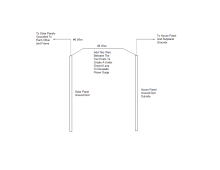I have read several posts on this subject. I get mixed answers as to what to do with the bond issue. I have an AIO that when you do a continuity test between the AC IN G & N you get no connection, No Bond. There is a connection between the AC IN G and the AIO case G. That's Okay I believe.
So do we bond the AC IN N & G at the AC OUT Breaker Box or Not?
So do we bond the AC IN N & G at the AC OUT Breaker Box or Not?




